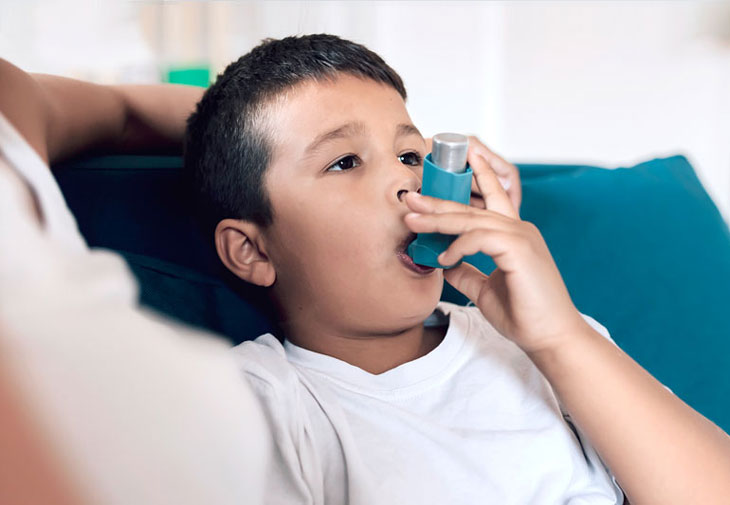Bronchial asthma with secondary infection causes life-threatening complications, read now to be more proactive in dealing with bronchial asthma with secondary infection.
What is bronchial asthma with secondary infection?
Secondary is many, infection is infection, spreading into the body. It can be understood that in addition to the main disease, the patient is also infected with one or more other germs, bacteria or viruses on the underlying disease.
Bronchial asthma with secondary infection is a respiratory infection that occurs on an underlying disease of bronchial asthma, and comes after each asthma episode. At this time, the respiratory fluid will have bacteria, the phenomenon of respiratory fluid stagnation causes stagnation in the fluid circulation process leading to bronchial asthma with secondary infection.
==> Symptoms of bronchial asthma

Evidence of secondary asthma
Respiratory failure
The condition in which the underlying tissue cannot be supplied with enough oxygen to sustain the life of the tissues and structures that make up the tissue. The disease is common in people with severe asthma or acute asthma, with symptoms of difficulty breathing, rapid breathing, sometimes stopping breathing, requiring the use of a ventilator, and continuous cyanosis. Respiratory failure is one of the causes of death in asthma.
The respiratory room is not accompanied by damage
The state of prolonged respiratory failure does not cause a lack of oxygen, in severe bodies, sometimes stopping breathing or continuous beating time. In these cases, patients often cause sudden suffocation, increasing CO2 in the blood, leading to coma and death.
Atelectasis
Another complication of bronchial asthma is atelectasis. This is a condition of reduced or incomplete expansion of the lung parenchyma due to localized or diffuse alveolar collapse, causing loss of lung volume. Ventilation and gas exchange functions in the collapsed lung area are affected because the air flow through the collapsed lung area is very small. More than 1/3 of children have complications of atelectasis when suffering from asthma. When asthma is stable, this condition will go away.
Pneumothorax
At this time, the alveoli are dilated, in the areas of the alveoli where blood vessels are sparsely dilated, the pressure in the alveoli increases sharply. When the patient coughs hard or overexerts, the alveolar walls are easily ruptured. Bilateral pneumothorax is the cause of death in people with asthma. Pneumothorax is common in about 5% of chronic asthmatics.
Bronchitis
The disease often has symptoms such as fever, increased difficulty breathing, increased sputum, often yellow or green due to infection, sputum test shows degenerated white blood cells and bacteria. Blood test of the patient shows increased neutrophils. The disease often appears at the time of hot - cold season change, sudden temperature changes, high humidity creates favorable conditions for bacteria and viruses to grow, causing flu, respiratory infections and ear - nose - throat infections, making asthma more complicated.
Emphysema
Emphysema, also known as emphysema, is a condition in which the walls of the alveoli in the lungs lose their elasticity, the alveoli become weak and fragile, causing airway obstruction. The loss of elasticity of the lung tissue causes air to be trapped in the alveoli, reducing the ability to exchange oxygen and CO2, making it difficult for the patient to breathe during exertion, exhaling little, the lips and extremities turn purple, and there is a lot of phlegm in the cough.
Chronic cor pulmonale
This is a case of right ventricular hypertrophy and dilatation secondary to increased pulmonary arterial pressure. This is a common complication in patients with severe asthma. Typical symptoms are labored breathing, cyanosis, the liver may be enlarged or bordering the ribs, and pain in the right hypochondrium. The time it takes for complications to develop into chronic cor pulmonale in people with bronchial asthma varies, and can last 5, 10 years or longer.
Note: This article is for reference only. Please consult a physician or specialist for further advice.




